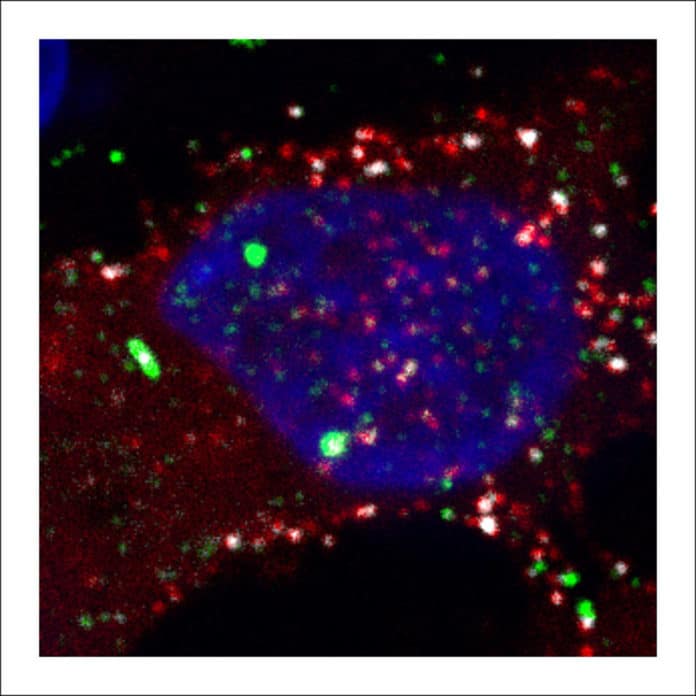Retroviruses are a kind of virus that use cells as machines to make more virus particles that are spread from cell to cell. There are three major infectious human retroviruses, including human immunodeficiency virus 1 (HIV-1), the reason for AIDS.
A new study sheds light on the avian retrovirus Rous sarcoma virus, which replicates similarly to HIV and causes tumors in domestic fowl.
Scientists from the Penn State College of Medicine focused on the role of a particular protein called Gag that acts as an escort for genetic material in viral replication. It forms a complex by binding to the viral ribonucleic acid (RNA) to package it into an infectious virus particle.
Dr. Leslie Parent, vice dean for research and graduate studies and professor of medicine, said, “Our primary goal has been to understand where the initial interaction between the Gag protein and viral RNA occurs. Other drugs and approaches have targeted viral replication after these complexes form. We hope that if we can better understand this interaction, early intervention strategies could be developed.”
For years, scientists used to believe that Gag protein and viral RNA interacted only in the cytoplasm of the cell. But, according to a study, Gag proteins entered the nucleus of the cell as well. Relying on the study, scientists hypothesized that Gag protein might select viral RNA for packaging in the nucleus, where the RNA is made.
In this new effort, scientists put fluorescent “labels” on the Gag protein and viral RNA to observe their interactions in live cells using confocal microscopy. They also captured images and videos of this process.
Scientists observed that Gag does bind viral RNA in the nucleus, and the complex traffics out of the nucleus. They propose that the viral Gag-RNA complex ultimately travels to the outer membrane of the cell where the viral particle is released to infect new cells.
Parent said, “Visualizing a live cell in real-time allows you to see the intricate dynamics of its functions. When you observe a cell over time, you can see the start, end, and speed of various processes. It allows you to witness how a live cell deals with a viral infection.”
Rebecca Kaddis Maldonado and Breanna Rice, postdoctoral scholars at the College of Medicine and coauthors on the publication, said knowing that Gag protein selects viral RNA in the nucleus opens up more questions that will be explored in future studies. They want to understand more about the kinetics of the interaction between Gag protein and viral RNA in the nucleus, mechanisms for how the complicated moves outside the nucleus, and what other elements of the host cell may play a role in the process.
Maldonado said, “This observation is just the first of a series of investigations we need to carry out to understand this interaction. The more we know about the details of this process, the better suited we’ll be to propose or develop therapeutic targets.”
Journal Reference:
- Rebecca J Kaddis Maldonado et al., Visualizing Association of the Retroviral Gag Protein with Unspliced Viral RNA in the Nucleus. DOI: 10.1128/mBio.00524-20
